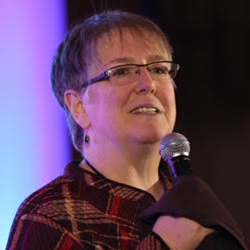MINNEAPOLIS, MN, USA, February 2, 2022/EINPresswire.com/ — Setting the global standards for e-discovery, the Electronic Discovery Reference Model (EDRM) is pleased to announce the final release of its new EDRM Guidelines for E-Discovery Processing.
EDRM develops and promotes thought leadership, frameworks and best practices in e-discovery, with its engaged global community comprised of knowledgeable, multidisciplinary professionals. EDRM contributors continue to enhance e-discovery, privacy, security and information governance frameworks, processes and standards.
Despite its pivotal posture, processing garners little attention. It’s something hardly anyone thinks about until it blows up.”
— Craig Ball, of Craig D. Ball, PC
The Processing Guidelines Project is led by eDiscovery experts, EDRM Global Advisory Council Leaders and co-Trustees, John Tredennick, CEO of Merlin Search Technologies, Inc. and Craig Ball, of Craig D. Ball, PC. Tammy Dahl, ACP, CEDS of Mesch Clark Rothschild was the Assistant Editor and the Drafting Team included Christopher Cella, Aon; Tracyann Eggen, CommonSpirit Health; William Hamilton, University of Florida Levin School of Law; Oran Sears, Relativity; Sarai Shubert, iPRO and Jeffrey Wolff, ZyLAB. Organization names are provided for identification and not for any other purpose.
“Processing is enabling technology for data normalization for AI and machine learning, search indexing, rendering, redaction and other foundational elements for our technology enabled future,” says Mary Mack, EDRM chief legal technologist and CEO. “EDRM is grateful to the Processing Guidelines team, and in particular, to Craig Ball for allowing EDRM to adapt his wonderful work and to Craig and John for their leadership and collaboration. We are very appreciative of those who took the time to review and comment.”
Our mission was to provide guidelines on the legal industry’s needs for processing both to educate newcomers and to provide guidance for those looking to create or improve processing software.
John Tredennick, CEO of Merlin Search Technologies, Inc.
“Processing is an important but not always visible part of the EDRM workflow. If processing is not done properly, the rest of the process can fail, opening you to the expense of redoing later work if not sanctions from the court,” says John Tredennick. “Our mission was to provide guidelines on the legal industry’s needs for processing both to educate newcomers and to provide guidance for those looking to create or improve processing software.”
“Processing is the “black box” between preservation/collection and review/analysis. Although the Electronic Discovery Reference Model depicts Processing, Review and Analysis as parallel paths to Production, processing is an essential prerequisite—the sole road—to Review, Analysis and Production. Any way you approach e-discovery at scale, you must process ESI before you can review or analyze it,” says Craig Ball, adding, “Despite its pivotal posture, processing garners little attention. It’s something hardly anyone thinks about until it blows up.”
Per Craig Ball, “The most durable achievement of the EDRM is its establishment of a common vernacular for e-discovery. Our hope for the EDRM Processing Guidelines is that they will do the same for evidence processing by defining the common elements of a processing effort and equipping the legal community with a common argot, a vocabulary, to facilitate communication and comprehension.”
The global EDRM community is comprised of 33% corporations, 30% law firms and 23% software and service providers in 136 countries across six continents.
About the EDRM Guidelines for E-Discovery Processing Project
The EDRM Guidelines for E-Discovery Processing draws from Craig Ball’s seminal work, “Processing in E-Discovery, A Primer (© Craig Ball, 2019), and focuses on the processing stage of the EDRM. The Guidelines were created to help elucidate this often-overlooked stage of the EDRM and were designed to help readers better understand the basic steps involved in processing and the needs of the legal professions at this stage. In that regard, these guidelines are addressed to those who (a) use processing products, (b) support these products, (c) processing products, and (d) are new to e-discovery and want to learn about the processing stage.
Download the EDRM Processing Guidelines here: https://edrm.net/wiki-category/guidelines-for-e-discovery-processing/.
About EDRM
Empowering the global leaders of e-discovery, the Electronic Discovery Reference Model (EDRM) creates practical resources to improve e-discovery, privacy, security and information governance. Since 2005, EDRM has delivered leadership, standards, tools, guides and test datasets to improve best practices throughout the world. EDRM has an international presence in 136 countries and growing and an innovative support infrastructure for individuals, law firms, corporations and government organizations seeking to improve the practice and provision of data and legal discovery. Learn more about the EDRM today at EDRM.net.
EDRM Media Contact
Kaylee Walstad
Chief Strategy Officer
EDRM Global, Inc.
Kaylee@EDRM.net
+1(612)804-3244
Kaylee Walstad
EDRM
+1 612-804-3244
email us here


